
While the issue of missing and murdered Indigenous women and girls is making headlines in Canada because of the release of the final report of the inquiry looking into it, advocates in the United States are also raising the alarm.
“A lot of people like to use the word epidemic but I think that really minimizes what’s really going on here,” said Earth-Feather Sovereign, an MMIWG advocate from the Colville Confederated tribe in Washington state.
“I believe it’s a pandemic.”
A new report released in Washington state highlights just how bad it is.
Extreme rates of violence
The report, “Missing and Murdered Native American Women Report” finds that three per cent of the 1,802 missing persons in Washington are Native American women, even though Native Americans make up just one per cent of the state’s population.
(Portland’s Women’s March this year. Photo courtesy: Missing and Murdered Indigenous Women USA, Facebook)
The report was meant to not only shed light on the number of cases but to encourage tribal, state, local and federal agencies to work together to address the growing problem. The report was compiled by Captain Monica Alexander of Washington State Patrol.
(Capt. Monica Alexander of the Washington State Patrol and author of Missing and Murdered Native American Women Report. Photo courtesy: WSP)
The report reflects Bill 1713 intended to improve law enforcement response to missing and murdered Native American women, authored by Republican representative Gina Mosbrucker, and pushed by Earth-Feather Sovereign.
“What we’re asked to do through the Bill is set up a protocol,” said Alexander.
“What the Bill does [too] is provide us with two tribal liaison that are dedicated positions in the state patrol,” she added
One focus for these new positions will be to bridge any gaps concerning missing persons cases.
Others have also attempted to track the crisis but firm numbers are a challenge.
In November 2018, the Seattle, Wash.-based Urban Indian Health Institute also released a report examining the tragedy in 71 urban cities in the US.
The institute identified 506 cases of missing and murdered Native American and Alaska Native women and girls. The numbers show there were 280 murder cases, 128 missing cases and 98 unknown.
Echo-Hawk says the institute partnered with Annita Lucchesi, a PhD candidate at Lethbridge University to look at the narratives around MMIWG in urban cities. Photo courtesy: UIHI)
“We were seeing extreme rates of violence but no data collection had ever been done or released specific to MMIWG,” said Abigail Echo-Hawk, director of the institute.
“The reason it hadn’t been done is because of the invisibility of our communities within the larger United States.”
The institute is the only organization currently doing nation wide research on the MMIWG crisis in urban areas.
‘Femicide’
Other reports show that the crisis is also happening across the Americas.
According to the United Nations, Indigenous women and girls in Argentina, El Salvador, Guatemala, Honduras and Mexico are found murdered or are going missing at alarming rates.
Defined as femicide, it is estimated 12 lives are taken a day.
“It’s happening in all the countries where they have Indigenous people,” said Earth-Feather Sovereign.
(Chief Commissioner, Marion Buller of the National Inquiry into Missing and Murdered Indigenous Women and Girls at the closing ceremony. Photo: APTN)
No true number
In Canada, the National Inquiry into Missing and Murdered Indigenous Women and Girls, led by four commissioners mandated to investigate systemic causes of all forms of violence against Indigenous women and girls released a 1,200-page report followed by 231 calls for justice.
More than 2,380 people, family members to survivors of violence participated in the inquiry process.
In their report, the commissioners concluded there are no true numbers to show how bad this tragedy really is.
But what is known is Indigenous women and girls are 12 times more prone to violence than any other group in Canada.
The commissioners wrote that the number of lives taken is likely under-reported due to the lack of formal reporting practices or the fact that some families not yet ready to share their loved one’s story.
Read More
Genocide
In their report, the commissioners classified Canada’s colonial and perpetuated violence against Indigenous women and girls as genocide, a term causing a wave of heated reaction across the country.
(Photo of residential school survivors crowd. Caption: Survivors watching St. Michael’s Indian residential school being torn down in Alert Bay, B.C in 2015. Photo: APTN)
The report states the genocide has been empowered by colonial structures, the Indian Act, the Sixties Scoop, residential schools and breaches of human rights, adding that all of those factors have led to increased rates of violence, death and suicide in Indigenous populations.
Read More:
Trudeau silent on genocide after accepting MMIWG Inquiry final report
Abigail Echo-Hawk with the Urban Indian Health Institute in Washington agrees with the commission’s finding.
“It is an absolute and ongoing continuation of genocide,” said Echo-Hawk.
“I think there’s a fear around that word [genocide] and there’a a responsibility both from the government [and] from the communities outside of the Indigenous ones.”
Pattern of police mistrust, institutional inequality
Frequently, stories told by family members and survivors of violence during the national inquiry’s truth gathering process pointed to the lack of police investigations, indifference, victim blaming or mistrust when it came to how the police handled their loved one’s case.
In their interim report published in November 2017, the commissioners recommended there be a national police force to assess or reopen investigative files of the missing and murdered.
The Urban Indian Health Institute cited institutional structural inequity and racial and gender biases in police forces, declaring Native American women and girls will continue to be killed or go missing as long as law enforcement does not track these cases and get serious about solving them.
(Vicki Chartrand believes the policing today does not address the violence and as a society we need to look at Indigenous approaches. Photo courtesy: Vicki Chartrand)
“From a criminal justice lens, if you take a white woman that goes missing from an affluent family, a lot of resources and community effort gets pooled into that,” said Vicki Chartrand, sociology professor at Bishop’s University in Quebec and
a criminal justice professor at the University of Ottawa.
“Justice is supposed to be blind but there’s a significant bias in terms of who we see as worth the resources … it’s just as much as caught up in these colonial frameworks.”
Advocates paving the way forward
It doesn’t surprise Earth-Feather Sovereign to see so many people on the ground demanding change for the missing and murdered.
[Earth Sovereign. Photo courtesy: Facebook.)
“I believe it takes everybody to come together to make it an issue for the media and for people to really want to take the time to see what’s going on,” said Sovereign.
Read More:
The journey of Gladys Radek and her fight for human rights
“It was just like with Standing Rock, nobody cared about it until everybody was watching and cared about it.”
Standing Rock is a reservation that sits on the border of North and South Dakota where thousands of Indigenous people from across North America gathered in their fight against the Dakota Access Pipeline that was to pass through the Sioux Territory.
Earlier this year, an Indigenous Peoples March took place in Washington to raise awareness about the injustices affecting Indigenous Nations.
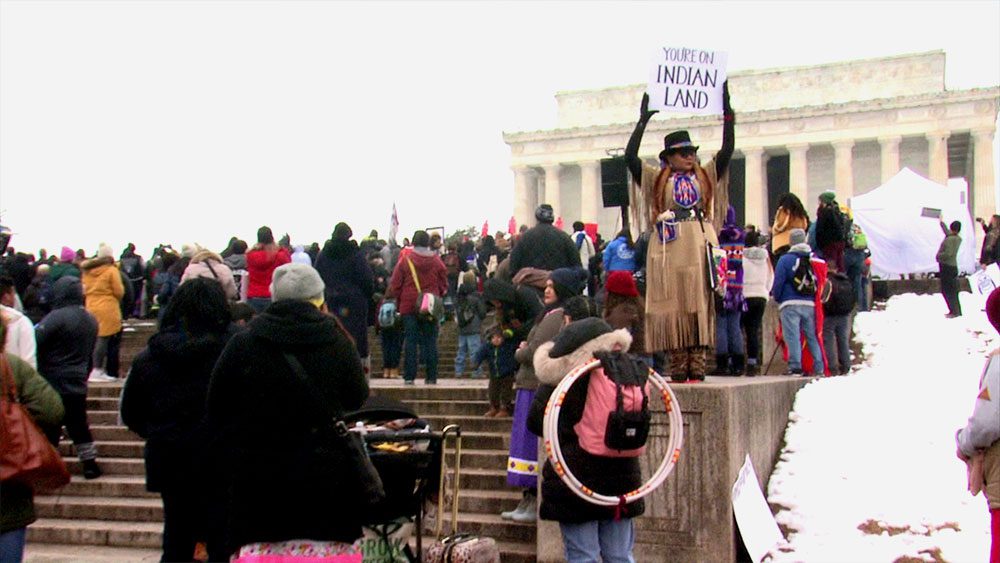 (The Indigenous (Peoples March in January 2019. Photo: APTN)
(The Indigenous (Peoples March in January 2019. Photo: APTN)
Approximately 4,000 people from Canada, Australia and the United States took part to combat issues such as land appropriation to racism.
Watch:
Here’s why some people marched in Washington D.C. on Friday
“It doesn’t surprise the Indigenous community about the word or term genocide, and like I said the truth is out there but where do we go from here? said Sovereign.
“Is Canada going to deny it or go forward and start the healing process and build better bridges.”



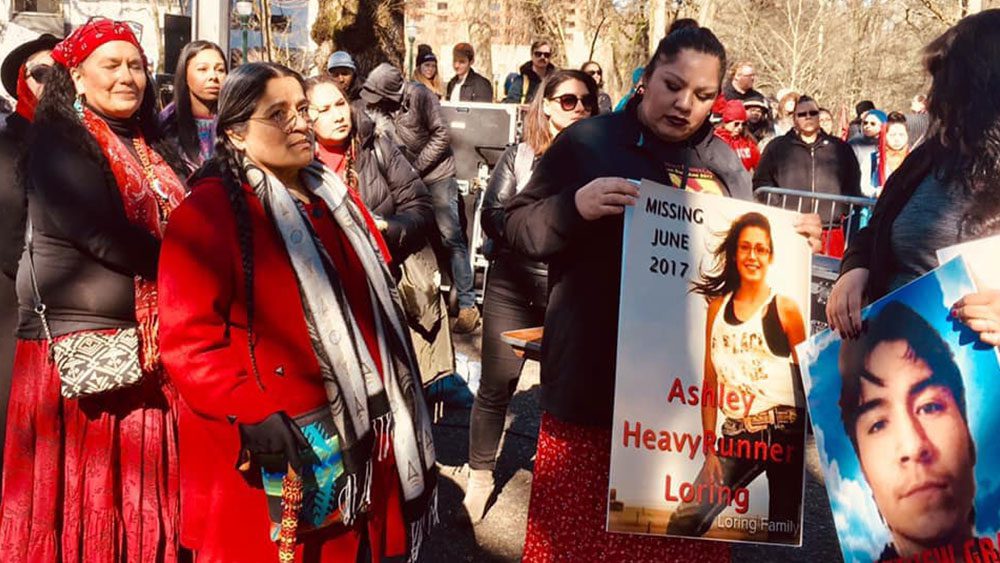
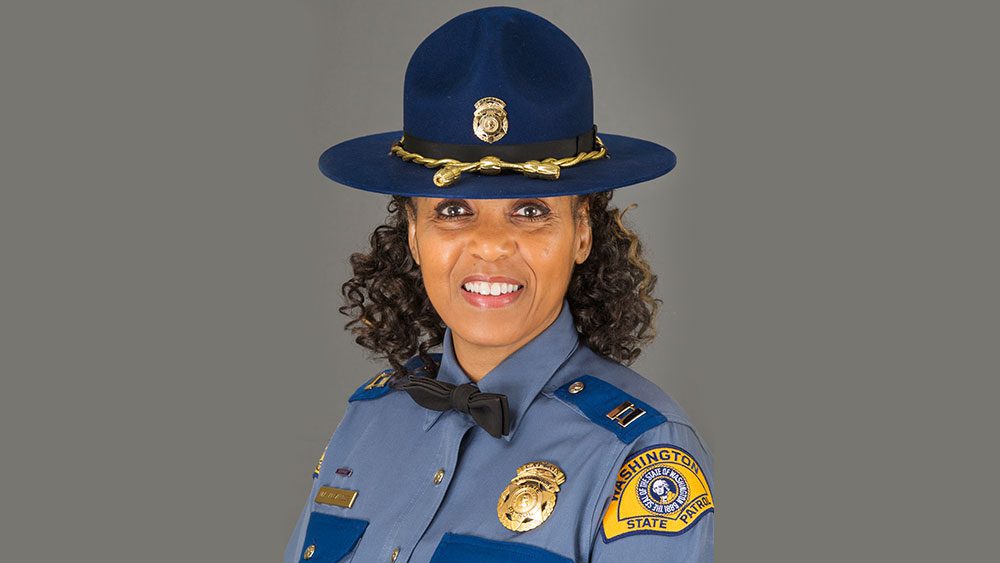
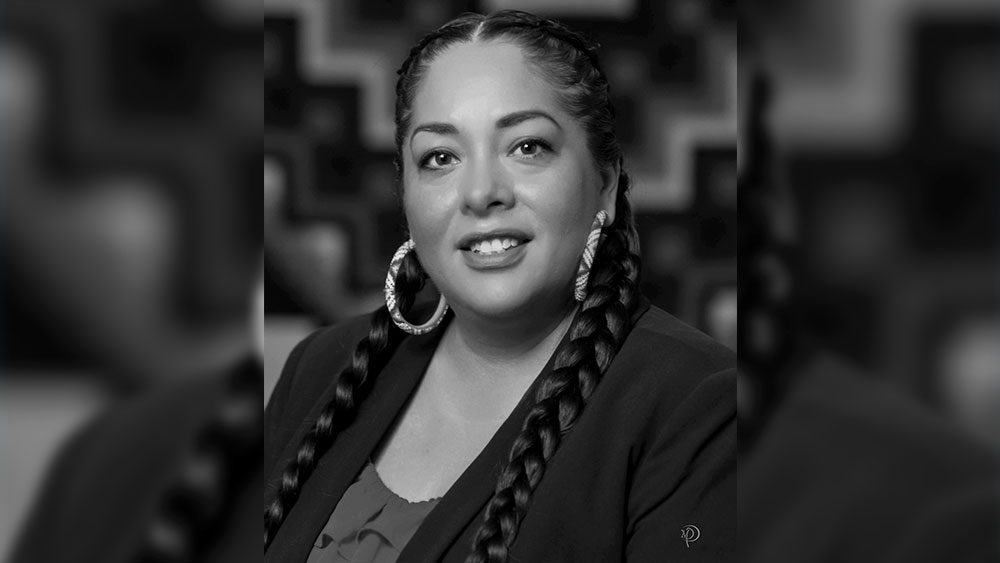

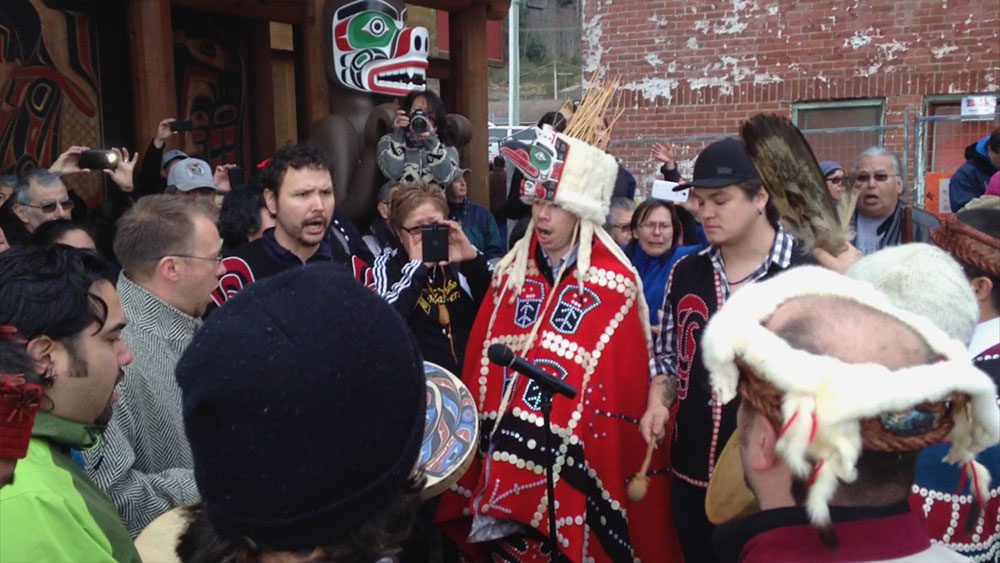

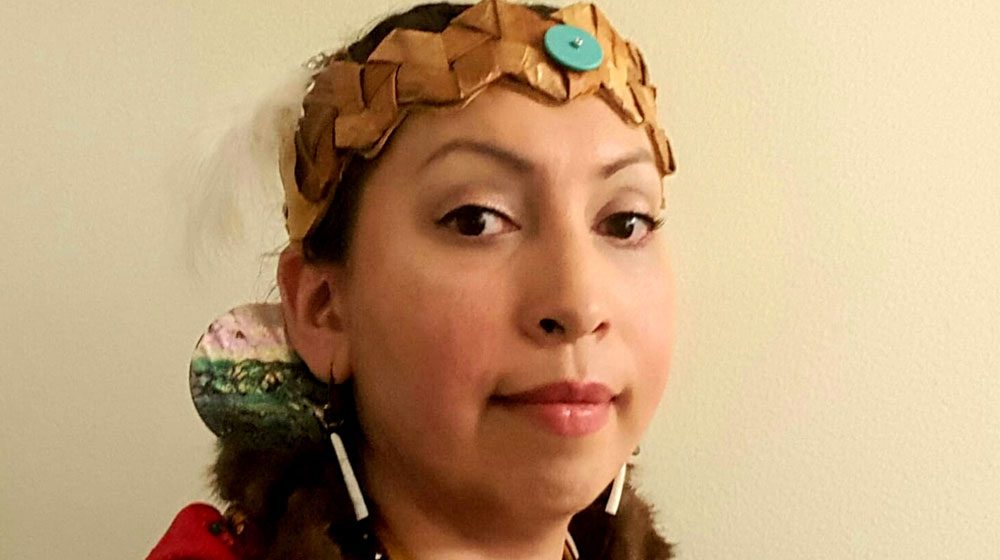





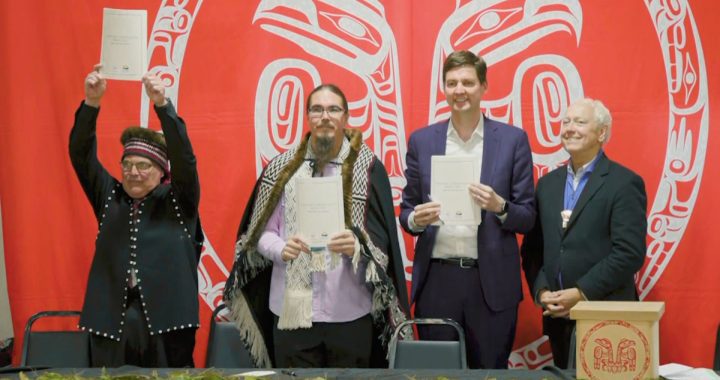
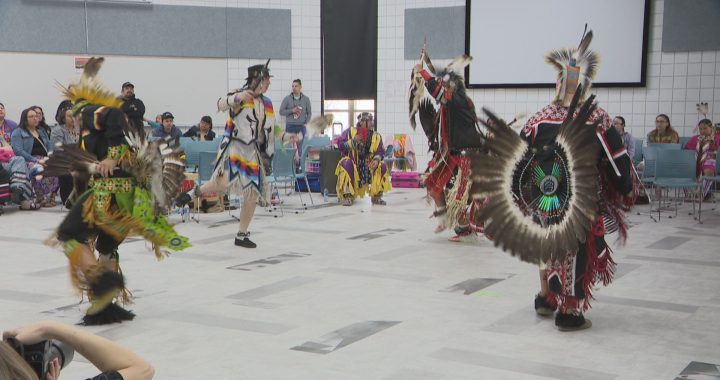
Blood and land issues of ownership perhaps!? We can safely say that indigenous women are valuable not only at home but seemingly valuable for the dominant society since so many are stolen. As for why, I can only think it’s about resources and watering down the conditions of treatise by being blood quantum ineffective. Perhaps it’s better to guard your women at all times, chaperones too, better a captive in your own community where there is love than a captive whose only concerns are financial